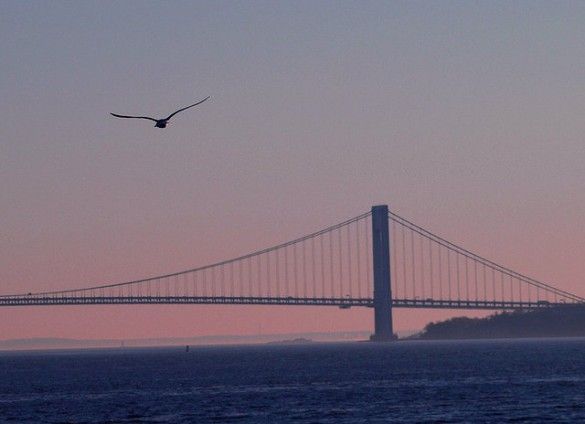Why Suicides Are Hard To Prevent On The Verrazano

The Verrazano-Narrows Bridge has been the scene of six suicides since December 2011 with two coming in the past month alone. Despite these tragedies, the MTA has no plans to increase suicide deterrents at the bridge, according to a report by SI Live.
In 2008 the MTA installed six telephones connected to LifeNet, a suicide prevention hotline, on the bridge. The phones are located on the bridge under signs that read “Life is worth living.” The MTA also has the bridge regularly patrolled.
Advocates like Jessica Suero, whose uncle jumped on January 25, 2012, believe that more is needed to stop suicides.
“If you’re going to commit suicide and you are determined, then you’re not going to stop and pick up a phone,” Suero told SI Live. “The phones are up there but nobody actually uses them.”
Suero believes that the MTA needs to install a fence. An extra barrier, even if it isn’t state of the art, could slow down jumpers and allow police and rescue workers more time to deal with the situation. SI Live sighted measures taken on other bridges that have helped cut down attempts.
The Harvard School of Public Health conducted a study looking at suicides at the Duke Ellington Bridge in Washington, D.C., before and after a fence was installed in 1986. It found that from 1979 to 1986, the bridge averaged 3.67 suicides per year, and none from 1987 to 1990.
Officials have said the replacement for the Tappan Zee Bridge, which connects Rockland and Westchester counties, will include an anti-climbing fence along with more suicide prevention phones, cameras and staff training for dealing with potential jumpers.
For those now wondering why installing a fence to prevent suicides would face so much resistance, the New York State Bridge Authority issued the statement that, “Physical barriers will significantly impact regular inspections and maintenance operations.”




